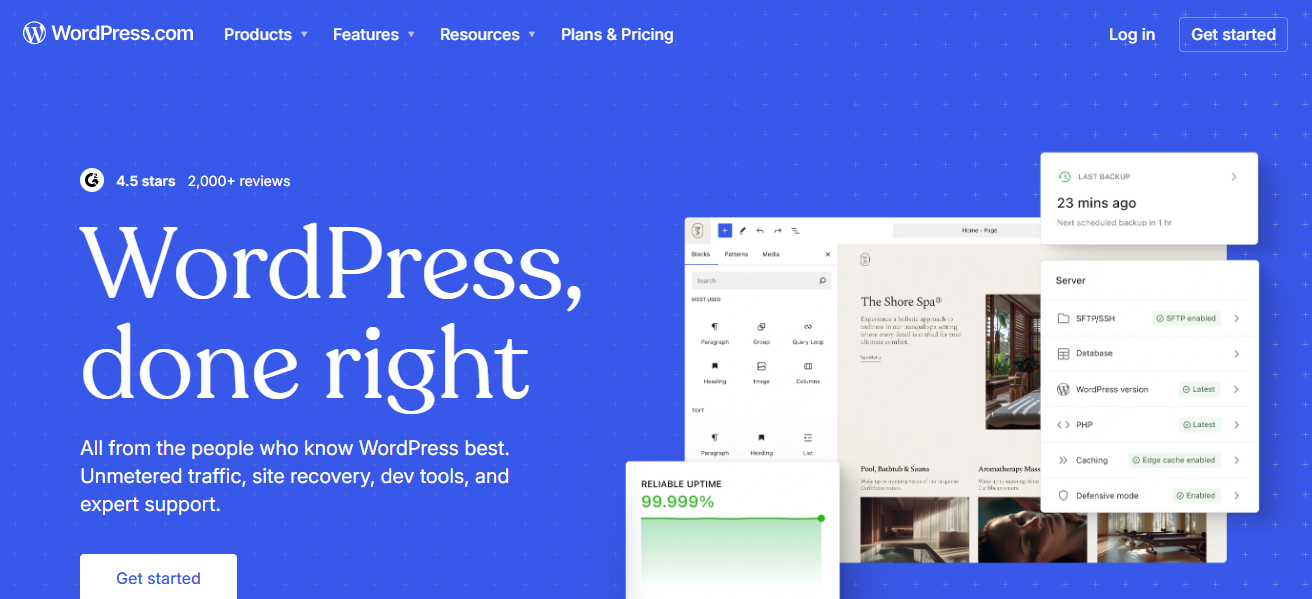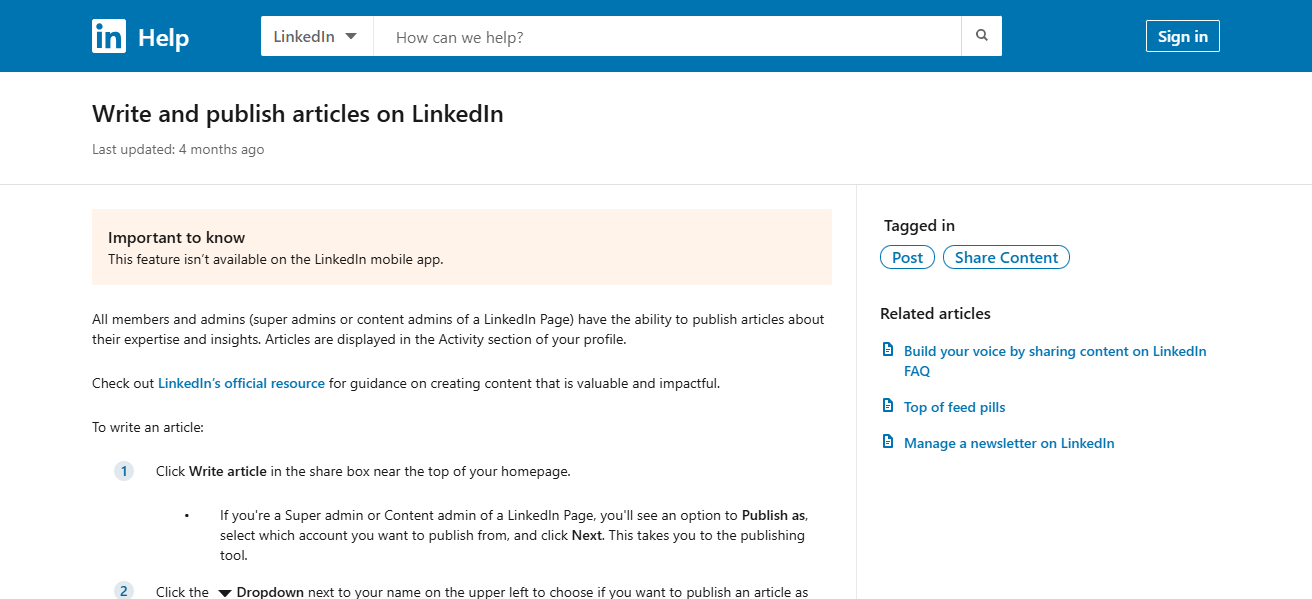In this article, I will discuss the Best Websites to Write Once and Publish Everywhere to help you maximize your content’s reach and efficiency.
Whether you’re a blogger, marketer, or writer, these platforms allow you to publish your work once and distribute it across multiple channels, saving time while boosting visibility, engagement, and potential income. Let’s explore your best options.
Key Points & Best Websites to Write Once and Publish Everywhere List
| Platform | Key Feature / Benefit |
|---|---|
| Medium | Allows cross-posting; wide built-in audience and high domain authority. |
| Substack | Publish newsletters that can also be turned into blog posts or shared on socials easily. |
| WordPress | Supports plugins like Jetpack to auto-publish to Facebook, Twitter, and more. |
| Ghost | SEO-optimized, and integrates with Zapier for multi-platform publishing. |
| Blogger | Easy to connect with Google tools and republish content across Google ecosystem. |
| HubPages | Built-in network to get visibility, can repurpose articles for Medium or LinkedIn. |
| Vocal Media | Revenue-sharing platform that allows cross-posting content elsewhere. |
| LinkedIn Articles | Great for professional republishing and reaching B2B audiences. |
| Quora Spaces | Reuse blog content as posts or answers; good for traffic and niche authority. |
| Hashnode | Developer-focused, supports cross-posting from GitHub or personal blog. |
10 Best Websites To Write Once and Publish Everywhere
1.Medium
Popular writing platform Medium is well-known for its tidy layout and sizable user base. Medium’s import tool makes it simple for authors to republish their blog entries while maintaining canonical tags to prevent search engine penalties.

Through the Medium Partner Program, you can make money off of your writing and use carefully chosen tags to connect with niche readers. For authors who wish to increase visibility and cross-post content without having to manage an entire website, it’s ideal.
If you want to use Medium’s distribution network and discoverability features while still maintaining your own brand, you can also integrate it with custom domains.
| Feature | Description |
|---|---|
| Built-in Audience | Access to millions of readers via Medium’s network. |
| Import Tool | Allows republishing while preserving canonical URLs (avoids SEO penalties). |
| Monetization | Earn money through the Medium Partner Program. |
| Tagging System | Helps content reach targeted niche audiences. |
| Clean Writing Interface | Distraction-free and intuitive editor. |
| Custom Domain Support | Option to connect a custom domain for branding. |
2.Substack
Substack is a platform for newsletters that doubles as a blog. Posts created by authors can be saved in a public archive and sent to subscribers instantly via email.
It is perfect for creators who wish to share long-form content and create a mailing list because of its easy-to-use editor and integrated monetization tools.

It’s simple to reuse and distribute Substack posts on sites like Medium, Twitter, and personal blogs. Publication to other platforms can be automated with RSS feeds and integrations.
Substack is particularly helpful for authors who wish to communicate directly with their readers through email.
| Feature | Description |
|---|---|
| Newsletter + Blog Combo | Posts are emailed to subscribers and hosted on a web archive. |
| Built-in Email List Management | No need for third-party email services. |
| Monetization | Supports paid subscriptions and donations. |
| RSS Feed Support | Enables syndication to other platforms. |
| Reader Engagement Tools | Supports comments, likes, and discussion threads. |
| Simple, Clean Editor | Easy-to-use interface for long-form content. |
3.WordPress
Millions of people use WordPress, a strong and adaptable CMS. You can automatically publish content to social media sites like Facebook, Twitter, and LinkedIn by using plugins like Jetpack.
Content can be syndicated to Medium, Substack, and other websites using WordPress’s support for RSS feeds. It gives you complete control over analytics, design, and SEO.

WordPress.com and self-hosted WordPress.org are both excellent options for creating a home base for your writing and disseminating it across multiple platforms. It works especially well for content producers who value long-term branding and ownership.
| Feature | Description |
|---|---|
| Highly Customizable | Extensive themes and plugins available. |
| Jetpack Integration | Auto-share content to social media platforms. |
| SEO Tools | Built-in or plugin-based optimization features. |
| RSS Feed | Facilitates content syndication across the web. |
| Full Content Ownership | Self-hosted option gives total control. |
| Monetization Options | AdSense, affiliate marketing, eCommerce, and more. |
4.Ghost
Ghost is an open-source publishing platform made for independent publishers and serious authors. It has integrated newsletter and membership features, is simple, and is optimized for search engines.
Ghost and Zapier work well together, enabling you to republish content on various platforms and automate social media sharing. To keep your content consistent across all platforms, you can use its RSS feed to sync with Medium or Substack.

Complete control over design, domain, and monetization is also possible with Ghost. It works best for artists who want a contemporary, distraction-free experience that gives them the freedom to effectively publish their work anywhere.
| Feature | Description |
|---|---|
| Clean, Minimal Interface | Designed for focused writing. |
| Built-in Memberships & Newsletters | Includes email and subscription options. |
| Zapier Integration | Automate publishing across platforms. |
| SEO-Optimized | Structured for fast loading and search visibility. |
| Markdown Support | Lightweight formatting for developers and bloggers. |
| RSS Feeds | Supports cross-posting and syndication. |
5.Blogger
Google owns Blogger, a straightforward and cost-free platform perfect for novices and part-time bloggers. It integrates well with other Google services like Google Analytics and AdSense, despite having less customization options than WordPress. ‘

Because Blogger allows RSS feeds, syndicating posts to other websites like Medium, LinkedIn, or Substack is simple. To reach larger audiences, you can also manually cross-post content. For authors who wish to publish their work and then reuse it in different ecosystems without requiring a lot of technical know-how, it’s a great place to start.
| Feature | Description |
|---|---|
| Free Hosting by Google | No hosting fees; runs on Google infrastructure. |
| Integration with Google Tools | Easy access to AdSense, Analytics, and Search Console. |
| Simple Interface | Beginner-friendly post editor and layout tools. |
| Custom Domain Support | Use your own domain for branding. |
| RSS Feed | Supports content republishing to other platforms. |
| No Coding Required | Fully managed and easy for non-technical users. |
6.HubPages
HubPages is a platform for user-generated content where authors can post educational articles known as “Hubs.” For evergreen content such as reviews, guides, and how-tos, it is perfect.
HubPages is helpful for rewriting or adapting content for a new audience, even though it doesn’t permit concurrent publishing on the same subject elsewhere.

Authors can develop their niche authority and make money through advertisements. Content created for your blog or Substack can be repurposed to meet HubPages’ editorial guidelines. It is an excellent platform for utilizing pre-existing concepts in a more monetizable and SEO-optimized setting.
| Feature | Description |
|---|---|
| Revenue Sharing | Earn via ad impressions and affiliate programs. |
| Topic-Focused Communities | Content is grouped by niche (e.g., tech, health). |
| Editorial Review | Articles go through moderation for quality. |
| Commenting & Voting System | Engages community around content. |
| SEO-Driven Articles | Designed for evergreen, long-lasting content. |
| Adaptable Format | Repurpose your blog posts into HubPages-style content. |
7.Vocal Media
On the revenue-sharing website Vocal Media, creators are compensated according to the number of reads. It is made to make creating content in a variety of niches, such as wellness, tech, and travel, simple.
Content from your blog or newsletter can be repurposed and modified to fit Vocal’s format. The platform offers structured storytelling prompts, an easy-to-use editor, and the ability to manage your own website.

Vocal is perfect for both content distribution and passive income generation because it does not require exclusivity, allowing you to publish the same content on Medium or Substack.
| Feature | Description |
|---|---|
| Monetization Per Read | Get paid based on the number of views. |
| Multi-Niche Categories | Choose from a wide range of story types and topics. |
| No Domain or Hosting Required | Hosted platform with a built-in audience. |
| Clean Editor | Intuitive editor for long-form content. |
| Story Challenges | Compete in writing contests with cash prizes. |
| Cross-Posting Allowed | No exclusivity; republish elsewhere freely. |
8.LinkedIn Articles
Republishing expert or thought-leadership content is ideal with LinkedIn Articles. It works particularly well for B2B writers, consultants, and entrepreneurs because of its built-in business-focused audience.
If you include canonical tags or links to the original, you can easily repurpose blog posts, newsletter entries, or Medium stories to LinkedIn without facing any penalties from search engines. Posts gain more visibility when they are shared with your network.

Additionally, the platform supports formatting and media embeds. You can reach a wider audience and interact with a more professional audience by combining LinkedIn with Substack or WordPress.
| Feature | Description |
|---|---|
| Business-Focused Audience | Ideal for B2B, professionals, and thought leadership. |
| Immediate Sharing | Automatically shared with your LinkedIn network. |
| Rich Media Support | Embed images, videos, links, and presentations. |
| Easy Republishing | Great for repurposing blog or newsletter content. |
| Professional Credibility | Establish authority in your industry. |
| No SEO Penalty for Cross-Posts | Supports canonical links or source credit. |
9.Quora Spaces
Users can create specialized communities and share content in a blog-like format with Quora Spaces. Authors can turn newsletters, blog entries, and articles into standalone posts or responses. Quora’s enormous SEO presence and existing audience help this content.
Quora is perfect for syndicating thought leadership or instructional content because it doesn’t penalize republishing.

To increase traffic, you can add links to Substack, Medium, or your website. It’s especially helpful for authors who wish to become recognized in a field and increase their visibility through a Q&A-driven ecosystem.
| Feature | Description |
|---|---|
| Niche-Focused Communities | Build a community around specific interests. |
| Repurpose Blog Content | Turn blog posts into Q&A-style or original posts. |
| Huge Organic Reach | Benefit from Quora’s SEO and traffic. |
| Link Back to Source | Drive traffic to original content or website. |
| Monetization via Quora+ (Beta) | Potential income via exclusive content subscriptions. |
| Low Competition | Easier to rank content in some niches. |
10.Hashnode
Hashnode is a blogging platform designed for tech writers and developers. It enables authors to publish content on a custom domain and cross-post to its tech-focused community automatically.
Additionally, Hashnode facilitates RSS feeds, GitHub syncing, and platform integrations such as Medium and Dev.to. When cross-publishing, you can link back to your original post and maintain ownership of your content.

For developers or engineers who want to share guides, tutorials, or devlogs while guaranteeing visibility across several channels, it’s perfect. It is an excellent platform for syndication because of its SEO-friendly structure and vibrant tech community.
| Feature | Description |
|---|---|
| Developer-Centric Community | Best for programming, dev blogs, and tech writing. |
| Publish to Custom Domain | Maintain your own domain and branding. |
| GitHub Integration | Sync blog posts with GitHub repositories. |
| Auto Cross-Posting | Share on Hashnode and personal site simultaneously. |
| SEO-Optimized | Fast loading, schema-marked content. |
| Markdown Editor | Lightweight writing interface preferred by devs. |
Conclusion
To sum up Selecting the best platform to “write once and publish everywhere” will increase your reach, improve your SEO, and engage a variety of audiences.
Platforms like Medium, Substack, and WordPress provide tools for effectively repurposing content, regardless of your role as a blogger, developer, or thought leader.
Make use of these websites to expand your online presence across various channels, save time, and make your voice heard.











